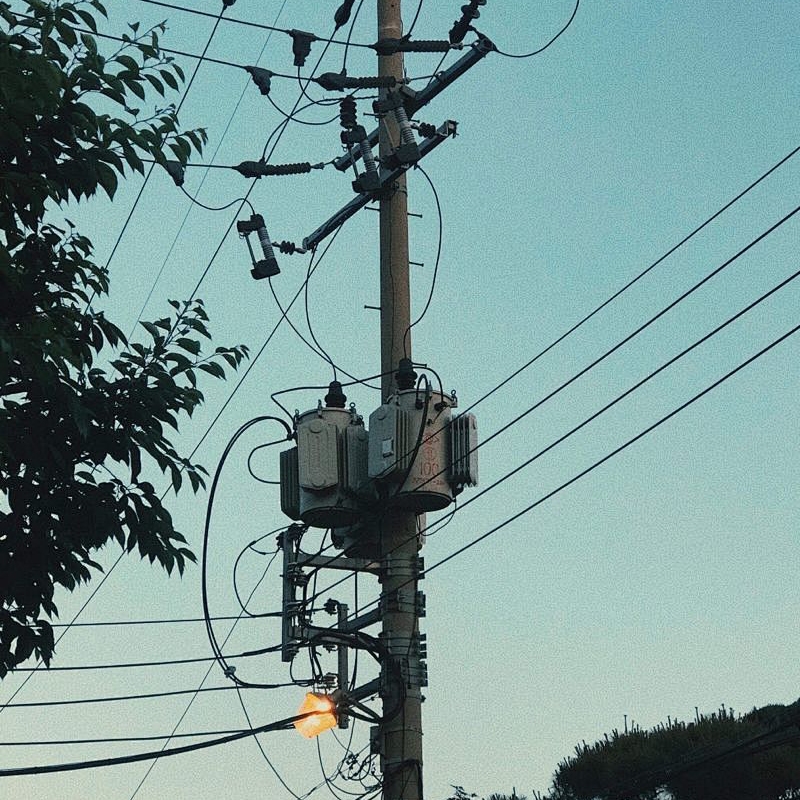Ten Tips for Transformers
When the volume of the transformer oil expands or shrinks with the change of oil level, the oil pillow serves to store and replenish the oil, ensuring that the oil tank is filled with oil. At the same time, due to the installation of the oil pillow, the contact surface between the transformer and the air is small, which slows down the deterioration rate of the oil. The side of the oil pillow is also equipped with an oil level gauge, which can monitor the changes in the oil level.
Why does the core of a transformer need to be grounded?
During operation, the core and other accessories of the transformer are all in the electric field around the windings. If they are not grounded, the core and other accessories will inevitably be induced with a certain voltage. Under the action of the applied voltage, when the induced voltage exceeds the discharge voltage to ground, a discharge phenomenon will occur. To prevent internal discharge of the transformer, the core should be grounded.
3. How effective are the cooling effects of the transformer strong oil air-cooling devices with and without guidance?
Most of the oil flow in the transformer equipped with a non-guided oil-air cooling device flows back through the gap between the box wall and the windings, while a small part of the oil flow enters the windings and the core interior, resulting in a relatively low cooling effect. The cooling oil flowing into the oil tank of the strong oil air-cooled transformer with a guide plate effectively flows through the core and the interior of the windings, enhancing the cooling effect and reducing the temperature of the windings.
4. What is the function of a thermometer? There are several methods of temperature measurement
The thermometer is used to measure the oil temperature in the upper layer of the oil tank, and it plays a role in monitoring whether the Power Transformer is operating normally. Thermometers can be classified into three types of humidity measurement methods according to the capacity of the transformer: mercury thermometers, signal thermometers and resistance thermometers.
5. What is the function of the thermosiphon filter installed on one side of the transformer oil tank?
Transformer oil will gradually become dirty and oxidized during operation. To extend the service life of the oil and ensure that the transformer operates under better conditions, it is necessary to maintain good oil quality. Thermosiphon filters can ensure that transformers maintain good quality during operation without undergoing severe aging. In this way, the oil can last for many years without the need for special regeneration treatment.
6. What is the unbalanced current of a transformer? What are the requirements?
The unbalanced current of a transformer refers to the current difference between the windings of a three-phase transformer. In a three-phase four-wire transformer, the unbalance degree of each phase load is not allowed to exceed 20%. In a three-phase four-wire transformer, the neutral line current caused by unbalanced current must not exceed 25% of the rated current of the low-voltage winding. If the above regulations are not met, the load should be adjusted.
Why is it necessary to measure the slope of the transformer's main cover and the connection pipe of the oil pillow after a new installation or major overhaul of the transformer? What is the standard?
There are two slopes on the gas relay side of the transformer. One is the slope of the transformer cover along the direction of the gas relay, which should be 1%-1.5%. The slope of the transformer cover should be padded from the bottom when installing the transformer. The other one is the slope from the transformer oil tank to the oil pillow connection pipe, which should be 2%-4%(this slope is manufactured by the manufacturer). These two slopes are designed for two reasons: one is to prevent air from being stored inside the transformer, and the other is to facilitate the rapid and stable entry of gas into the gas relay in case of a fault, ensuring the correct operation of the gas relay.
8. Which part of the winding of a transformer is the hottest when it is operating normally?
The temperatures of both the winding and the core are higher at the top and lower at the bottom. For the windings of oil-immersed transformers with general structures, it has been proven through experience that the hottest point of each transformer winding should be determined by tests at 70%-75% of the height direction of the hottest temperature and at one-third of the transverse direction from the inner diameter of the winding.
9. What causes the on-load voltage regulating device of the transformer to malfunction?
(1) The operating power supply voltage disappears or is too low. (2) The motor winding breaks and burns out, causing the starting motor to lose voltage. (3) Poor contact of the interlocking contacts. (4) Disengagement of the rotating mechanism and detachment of the pins.
10. What should be noted when replacing the desiccant in the transformer breather?
The heavy gas protection should be reconnected to a signal.
(2) When removing the respirator, the connecting pipe should be blocked to prevent air from being sucked back.
(3) After changing to a dry desiccant, the oil seal should cover the exhalation nozzle to seal the respirator.




